Landmark building changed the way downtown SLO was built — and it still stands today
The look of downtown San Luis Obispo is tied to the corner of Osos and Monterey streets and the two iterations of Andrews buildings that have occupied it.
The first Andrews Hotel was a 112-room, 16-bath luxury hotel.
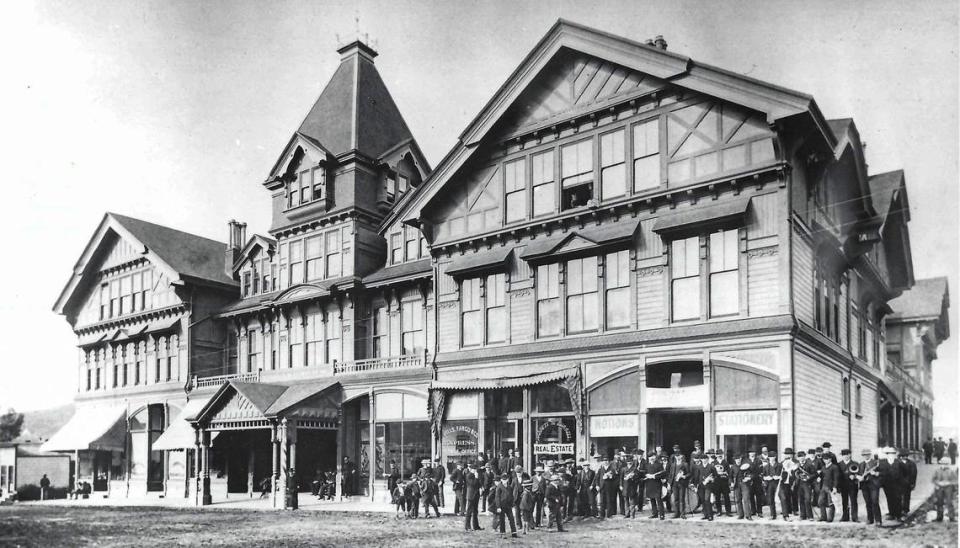
It burned down on April 18, 1886, a little over nine months after it opened. As previously chronicled in this column, the fire threatened to destroy downtown.
A story in the May 9, 1956, Centurama edition of The Telegram-Tribune said that postmaster J.J. Simmler saved all the mail and packages but lost all his personal furniture.
The post office department thanked Simmler for his vigilance but never offered to repay him for his losses.
The cause was faulty fireplace flues that sent hot embers into the attic.
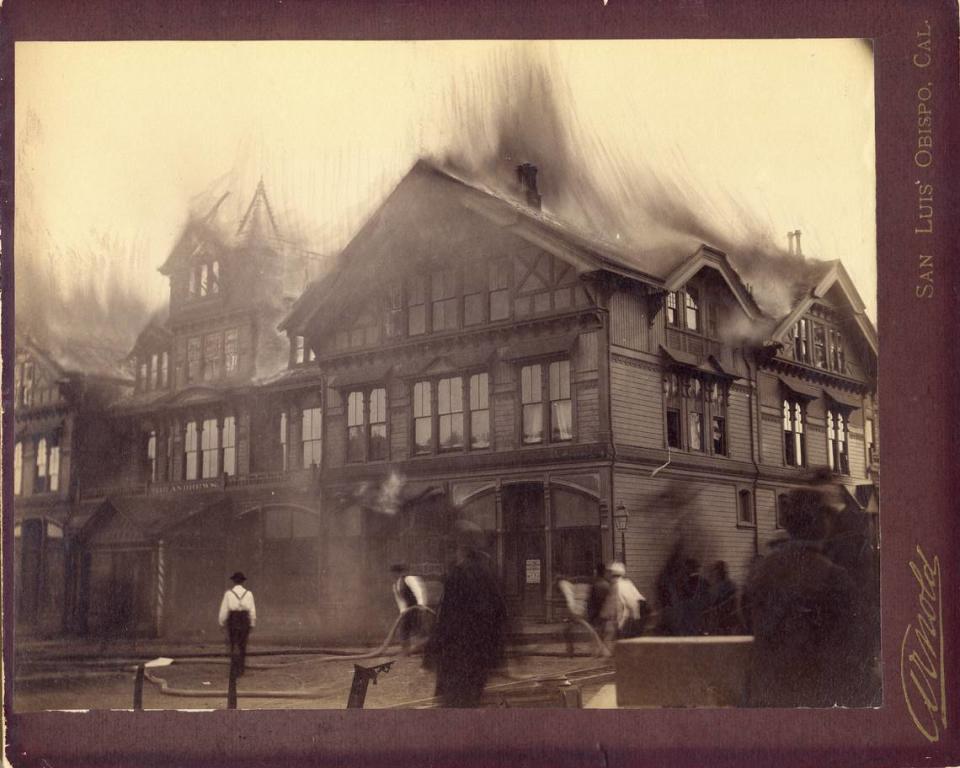
The city then banned wood buildings from the business section of town — so the new Andrews Building and the future downtown would be made of brick.
Andrews donated the land for the courthouse across Osos Street, setting the development shape of downtown for generations to come and ensuring his building would be in a prime location.
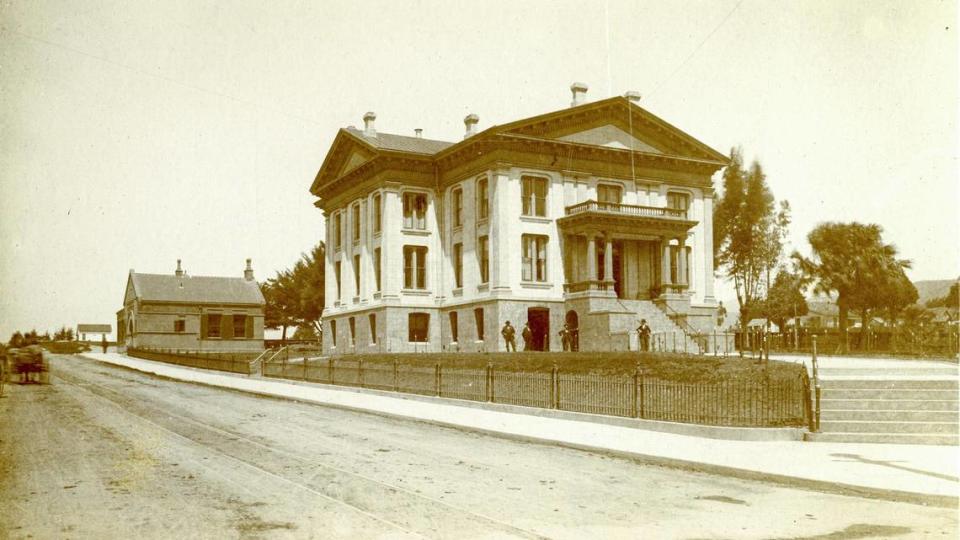
He also donated the site of the Court School, now the location of Ludwick Community Center at Mill and Santa Rosa streets.
The red brick Richardsonian Romanesque style brick building at Osos and Monterey was built in stages between 1893 and 1906.
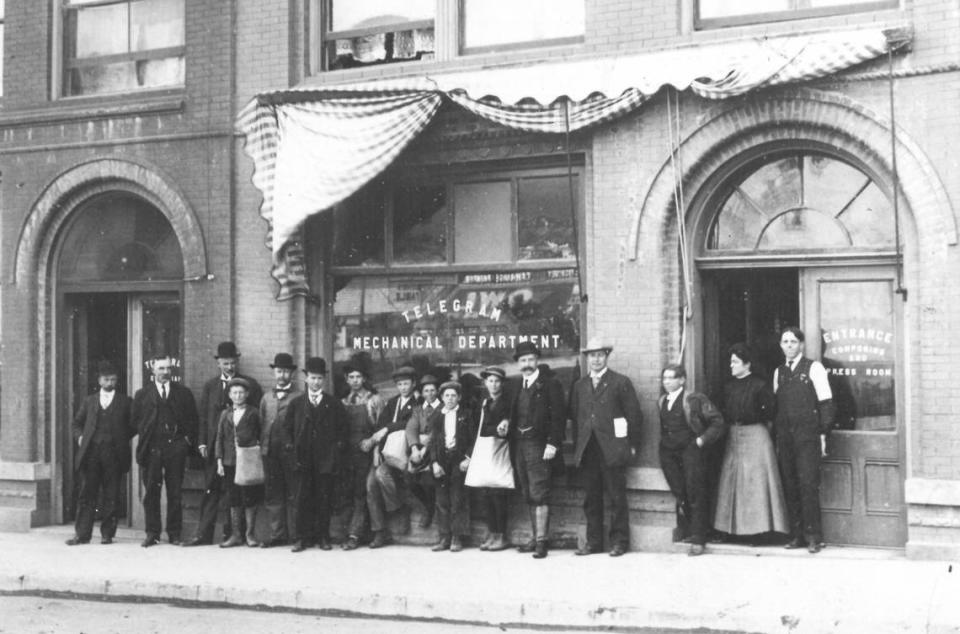
At one point the print shop for the San Luis Obispo Telegram was housed on the Osos Street side of the building.
The Rainbow Theater, predecessor to Palm Theater, also at one time called the building home.
J.P. Andrews was one of the early business organizers of San Luis Obispo County. He was great-grandson of Revolutionary War General Charles Cotesworth Pinckney.
When he died at the age of 89, the Daily Telegram had a front page obituary on Jan. 6, 1914.
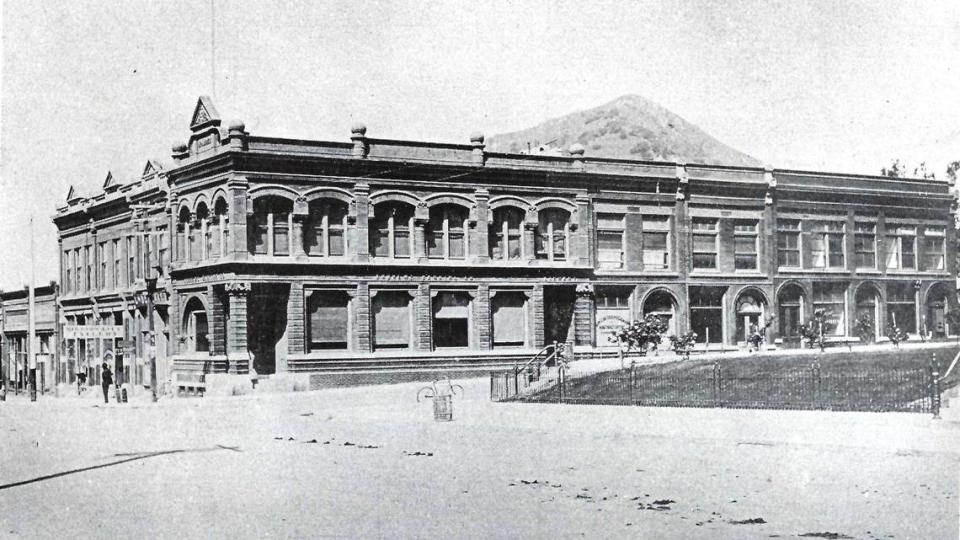
John Pinckney Andrews was born on a Montgomery County tobacco plantation in North Carolina, where he spent several years as overseer. Unspoken in the article was that slaves were then the plantation labor overseen in the south.
He left for California just as tensions that would erupt into the Civil War were building to the breaking point.
Andrews came to California in 1857 and after briefly trying his hand at placer gold mining and farming in Napa County, he settled in San Luis Obispo County in 1859, about three years before the start of the Civil War.
He started ranching at what would be the worst time for most ranchers.
A wave of smallpox swept the state in 1862. Then the drought of 1863-64 bankrupted many of the old rancheros, the shortage of grass and water killed almost half of the cattle in California.
What had been a disaster for other ranchers was a windfall for Andrews. Andrews bought starving cattle at a discount, boiled the meat and fed it to his large band of hogs.
In 1873, he was a founder of the Bank of San Luis Obispo where he worked during the decade with developer C.H. Phillips and John and Phillip Biddle. Later partners would include P.W. Murphy, owner of Santa Margarita Ranch; E. W. Steele, co-owner of Corral de Piedra Rancho; and other local leaders.
Andrews was able to keep the bank thriving in the era before federal deposit insurance and when a national financial panic could destroy a bank that over-extended speculative assets.
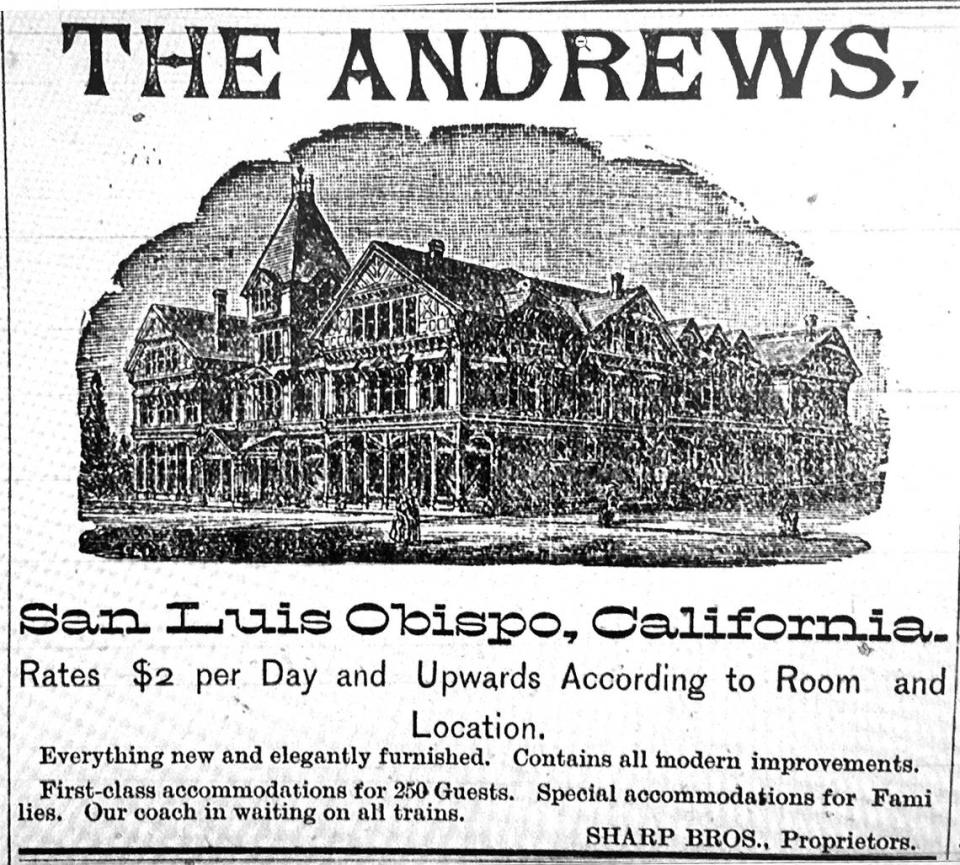
He survived the incineration of the first hotel that carried his name and built the building we know today, one of the prime blocks in downtown.
“The whole career of Mr. Andrews in San Luis Obispo has been one of marked effect upon its business and history,” read his obituary. “For a number of years he was the manager of the only bank and he conducted it with remarkable success, striving to enhance the value of property and prosperity of the county, and of the many debtors, few, if any, can complain of undue urgency or hardships in collecting. Periods of hard times have prevailed, but as a judicious and far-seeing banker, he has carried many debtors until changed conditions enabled them to meet their payments.”
In 1974, the Andrews Bank building was six decades past the era when its namesake had walked the halls and it had layers of paint that masked the original architectural charm.
This unbylined article ran May 22, 1974, in The Telegram-Tribune, edited here to correct factual errors:
Layers of paint coming off old bank building
Restoration of the historic Andrews Bank building at Osos and Monterey streets in San Luis Obispo is under way by the new owners.
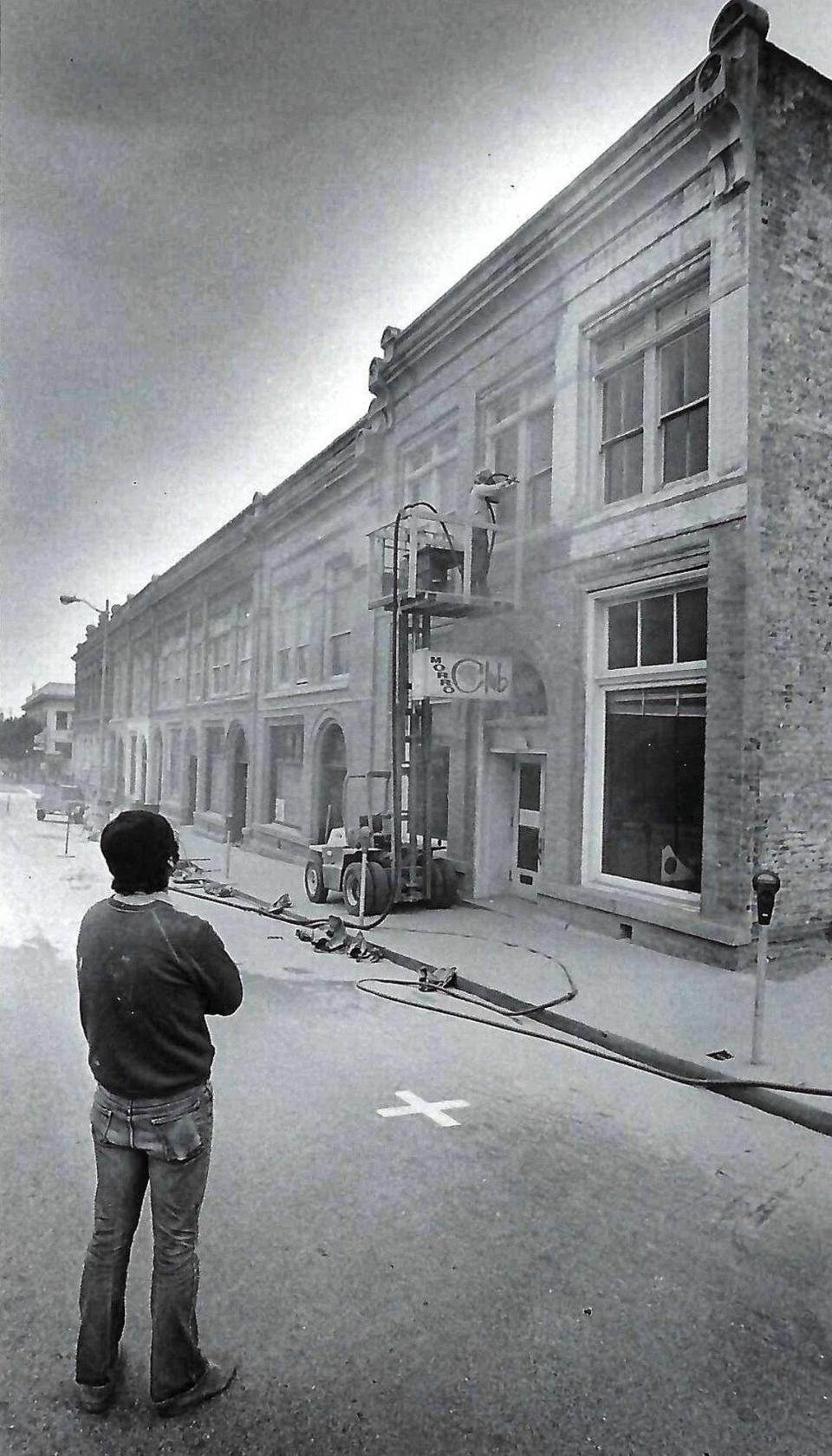
Sandblasting of the exterior was completed Sunday to remove paint lathered on the building over its 80-year history. Operating the sandblaster was one of the owners, Alan McVay. His helper was another owner, Vincent Fonte.
“Our next step will be painting the trim to its original color and condition,” Fonte said.
Remodeling of some of the interior already has started and “new tenants are coming up,” said Fonte.
The corner property was sold Dec. 31, 1973, in Los Angeles Superior Court by the estate of the late Oliver C. Field, and cleared escrow March 1.
An 1860s rancher and investor in San Luis Obispo County, J.P. Andrews, built the multi-story structure on the corner after his plush three story Andrews Hotel burned to the ground in the first year of its existence.
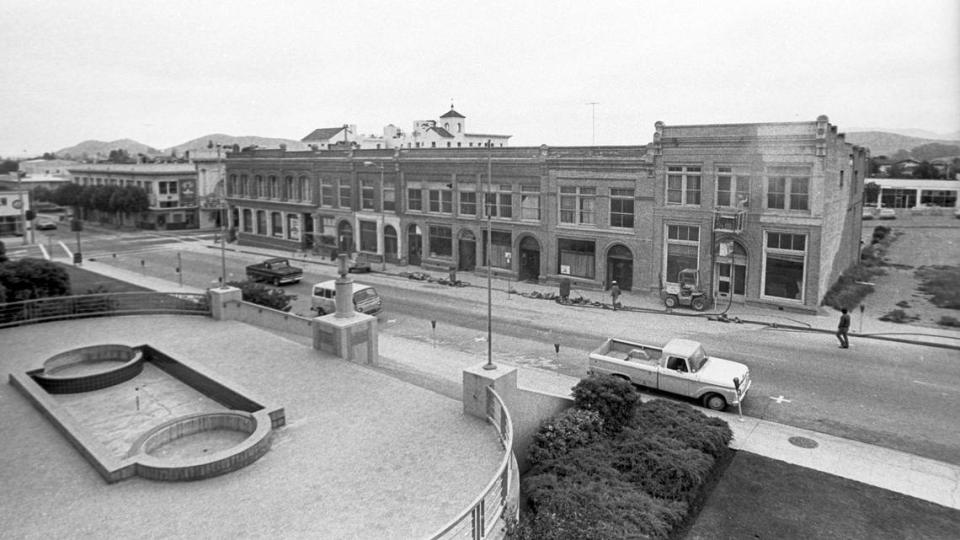
He first built the corner tip for the Andrews Bank, then added a store a year up the Osos Street side until he reached the limits of his land at 979 Osos.
Then he built a store addition a year on Monterey Street frontage until he again reached the property limits this time at 978 Monterey.
Andrews opened the second Andrews Hotel in the upstairs floor over the stores. The hotel name later changed to the Fremont Hotel.
The new owners hope to recapture the building’s early 1890s grandeur and charm in their refurbishing activities, Fonte said.
Their plans, however also include eventual modernizing of the interiors in keeping with the 1970s.

